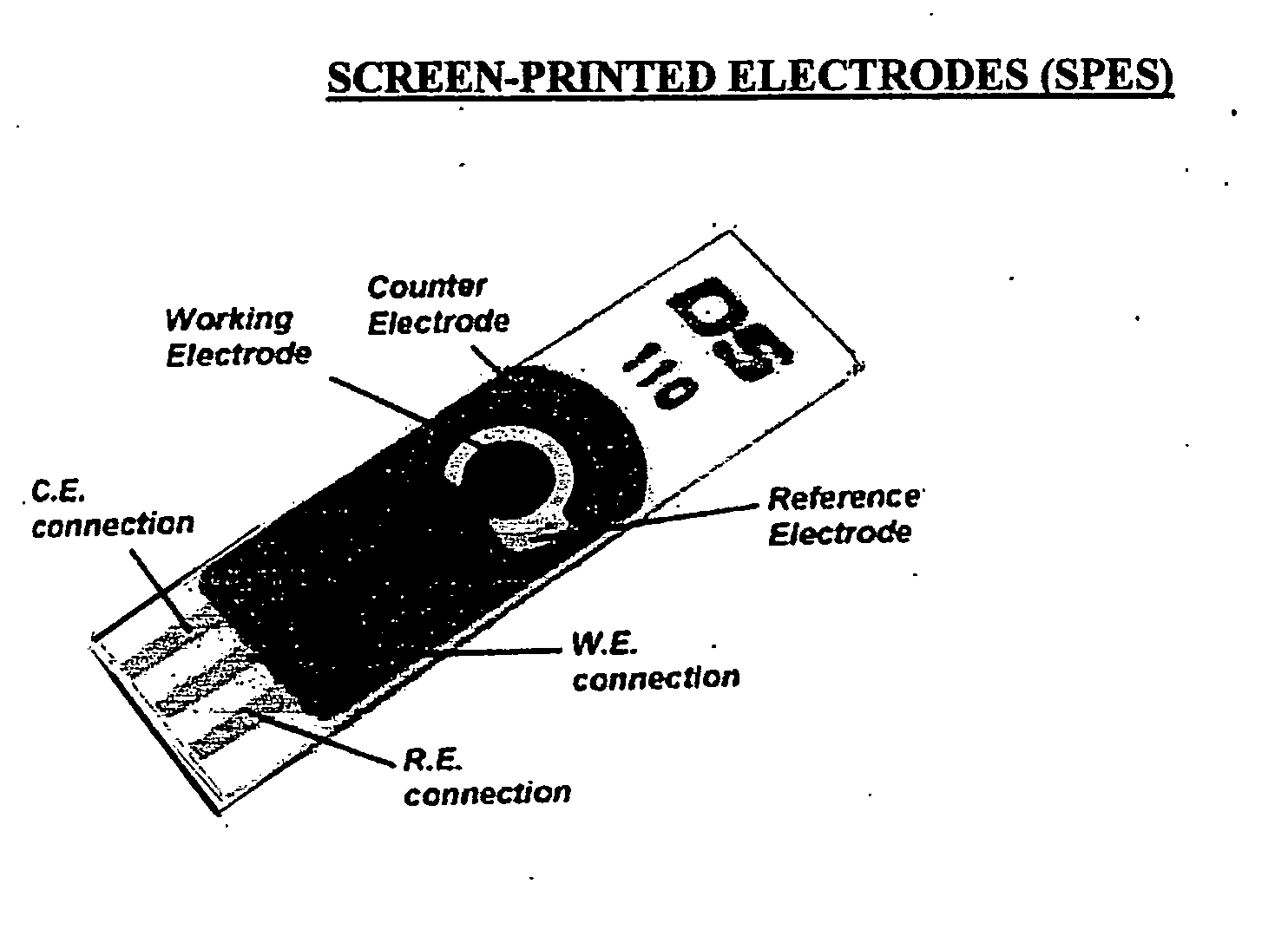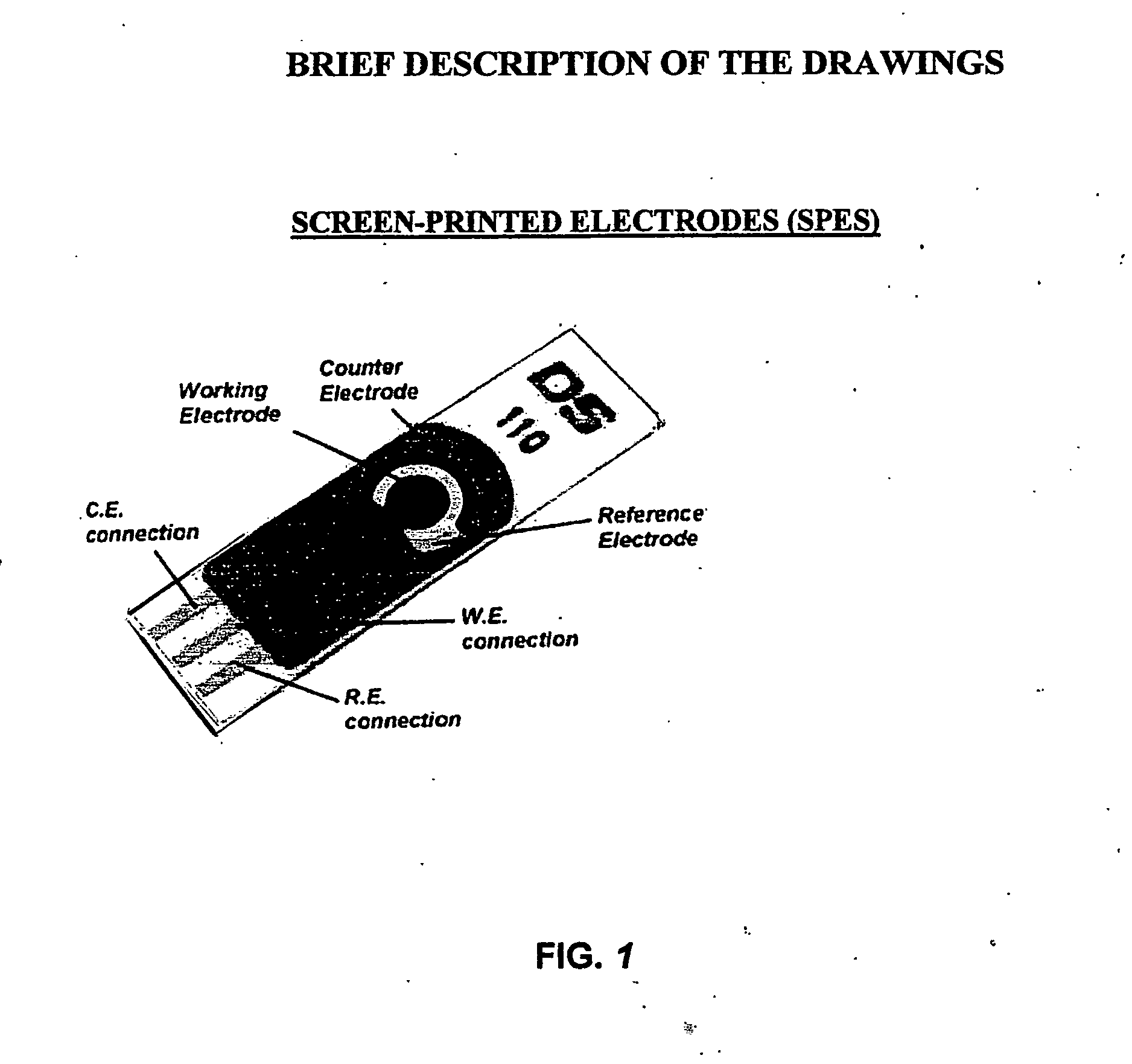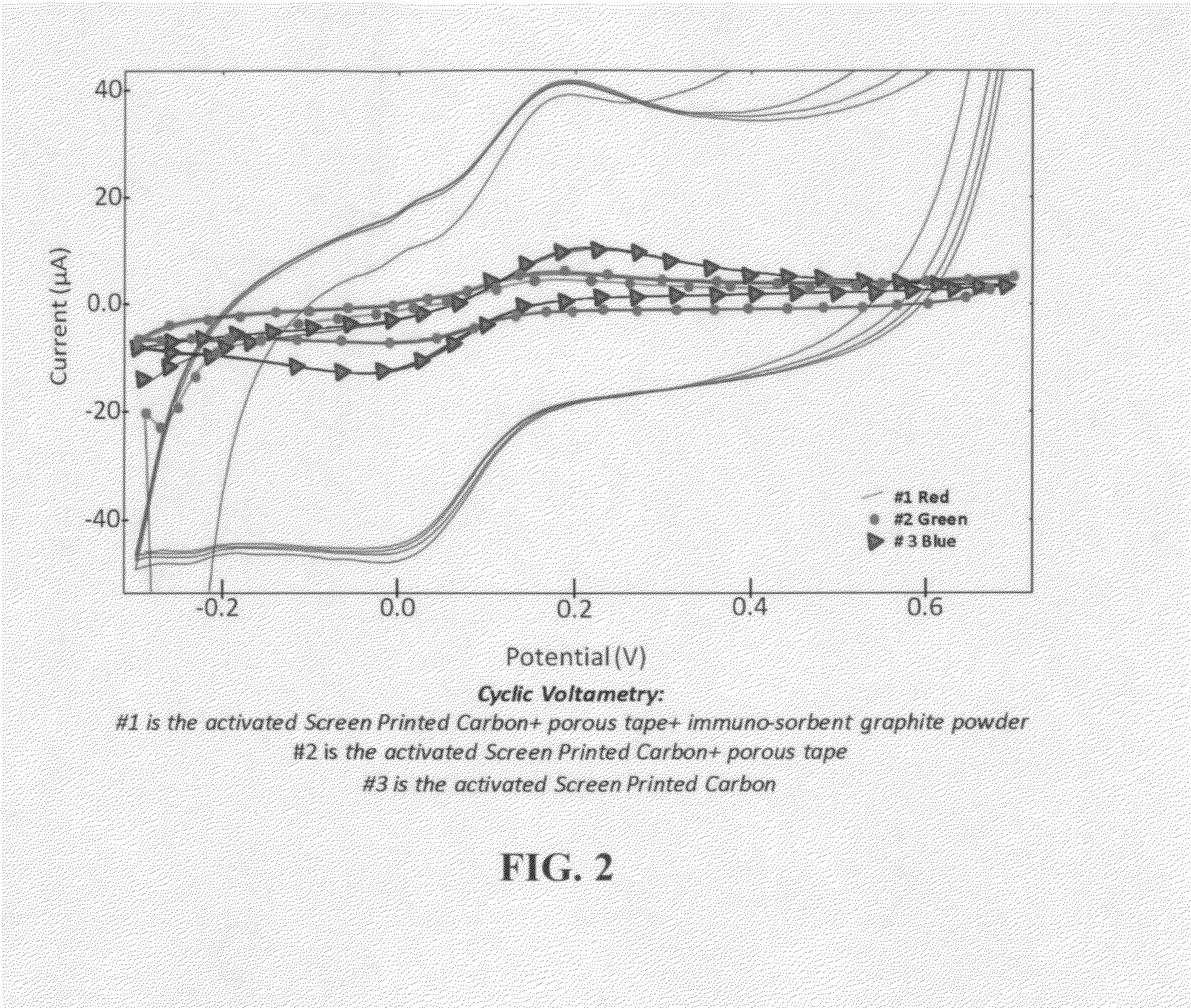Chip for a pathogens, parasites, toxins and desired chemical compounds detection
a technology of pathogens and parasites, applied in the field of chips for pathogens, parasites, toxins and desired chemical compounds, can solve the problems of comparatively long analysis of conventional immunoassay techniques, which usually takes several hours, and achieves rapid and sensitive immunoassays, rapid and convenient use, and rapid and convenient use.
- Summary
- Abstract
- Description
- Claims
- Application Information
AI Technical Summary
Benefits of technology
Problems solved by technology
Method used
Image
Examples
example 1
Controlled Experiment Using Cyclic Voltametry with Ferriccynide
[0038]The voltammetric response and redox cycling of the reversible Ferricyanide-ferrocyanide couple is commonly used as an educational tool to introduce electrochemistry. Potassium Ferricyanide in 50 mL of 1 M potassium nitrate to final concentrations of 1 and 2 mM was used. The Ferricyanide redox response forms the characteristic “duck” shape of a fully reversible reaction in the cyclic voltammogram, shown in FIG. 2.
Chip Sonsor Fabrication
[0039]The present invention is a carbon screen print electrode disposable element chip from different sources in the U.S. Further development of the chip is needed in order to use it in detection of pathogens such as bacteria, parasites, toxins, and viruses. The immobilized antibody or antigen on the carbon immunosorbent (also called modified carbon paste) is deposited on the top of the working electrode only. A layer of hydrophilic membrane with a pore size smaller than the carbon pa...
example 2
The detection of IgG
[0044]Rabbit IgG, anti rabbit-IgG antibodies, peroxidase labeled Goat anti-IgG (conjugate), peroxidase labeled Goat anti-peromyscus leucopus IgG, phosphatase labeled Goat anti-peromyscus leucopus IgG were from Sigma Chemical Co. (MO, USA). Sodium phosphates (Monobasic), sodium phosphate (Dibasic), sodium acetate (Trihydrate), Sulphuric Acid were from Fisher Scientific Co. (NJ, USA). Sodium chloride, sodium hydroxides were from JT Baker. (NJ, USA). Tween 20 (Polyxyethylenesorbitan Monolaurate) was from Sigma Chemical Co. (MO, USA). ULTI (Ultra Low Temperature Isotropic carbon) was from Carbon Medics Inc. (TX, USA). Woodward's reagent K (N-ethyl-5-phenylisoxazolium-3′-sulfonate), Trypsin inhibitor, Bovine Serum Albumin, Hydrogen Peroxide (30% v / v aqueous solution), α-Naphthyl phosphate were from Sigma Chemical Co. (MO, USA). Hydrochloric acid, Sodium Hydroxide, Sodium Iodide was from JT Baker (NJ, USA).
Preparation of Modified Carbon or Graphite Powder Immunosorbent...
PUM
| Property | Measurement | Unit |
|---|---|---|
| flow rate | aaaaa | aaaaa |
| flow rate | aaaaa | aaaaa |
| mesh size | aaaaa | aaaaa |
Abstract
Description
Claims
Application Information
 Login to View More
Login to View More - R&D
- Intellectual Property
- Life Sciences
- Materials
- Tech Scout
- Unparalleled Data Quality
- Higher Quality Content
- 60% Fewer Hallucinations
Browse by: Latest US Patents, China's latest patents, Technical Efficacy Thesaurus, Application Domain, Technology Topic, Popular Technical Reports.
© 2025 PatSnap. All rights reserved.Legal|Privacy policy|Modern Slavery Act Transparency Statement|Sitemap|About US| Contact US: help@patsnap.com



